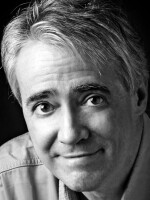At the U.S. Military Academy this week an archaeologist sliced, with surgical care, the lid off a foot-long, lead cube. It had spent nearly 200 years buried at the base of the 1828 monument to Thaddeus Kosciuszko, the Polish military engineer and soldier who helped build and defend West Point during the American Revolution.
"This time capsule is truly a unique discovery," West Point Superintendent Lt. Gen. Steve Gilland said before the unveiling, which was livestreamed. "We are excited to open it and see what the cadets left us nearly two centuries ago. The capsule's contents will certainly add to the West Point story and is another example of past generations of cadets gripping hands with present and future generations."
But as the Army Times had to report, "it appears as if the container's contents — and its generational ties — are merely dust in the wind."
The enigmatic lead box turned out to be full of silt. That's not a typo — silt, as in densely ground dirt.
The West Point archaeologist who sifted through the silt turned up six silver coins and a medal celebrating the completion of the Erie Canal. But no confidential diaries, papers, or maps; no commemorative cannonballs, or brass Army cadet buttons. Just silt, and a few silty old coins.
And yet, it can't be easy to seal anything into a lead box underneath a statue. Why would anyone take the time and trouble do that? What did those coins mean to those who put them there? Did they leave scraps of paper with guidance or explanations that have simply decomposed? What did they think whatever was buried in that box might mean to anyone who discovered it in 50 years, 195 or 500?
And what made them think, or was it just hope, that the lead box might ever be discovered? Ashes to ashes, dust to dust, silt to silt.
Today, much of what we may leave behind in thoughts and ideas appear in impressions and images, digital trails that can instantly make their way around the world, but are vulnerable to being erased just as easily. Ashes to ashes, dust to dust, digits to nothing.
This weekend marks the end of a summer in which our planet has boiled with storms, floods, heat, and terrible fires, aggravated scientists say, by our own human activities. Where might someone bury any kind of box today and be certain it would survive to be discovered in even a few years, much less another century?
Whatever disappointment there might be in finding simply a few old coins, the lead box pried open this week at West Point was someone's act of faith in the future.
Copyright 2023 NPR. To see more, visit https://www.npr.org.



